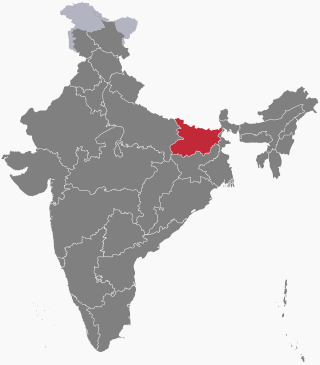Related Research Articles
The International Physics Olympiad (IPhO) is an annual physics competition for high school students. It is one of the International Science Olympiads. The first IPhO was held in Warsaw, Poland in 1967.
The International Chemistry Olympiad (IChO) is an annual academic competition for high school students. It is one of the International Science Olympiads. The first IChO was held in Prague, Czechoslovakia, in 1968. The event has been held every year since then, with the exception of 1971. The delegations that attended the first events were mostly countries of the former Eastern bloc and it was not until 1980, the 12th annual International Chemistry Olympiad, that the event was held outside of the bloc in Austria. Up to 4 students for each national team compete around July in both a theoretical and an experimental sections, with about half of the participants being awarded medals.
The Indian National Mathematical Olympiad (INMO) is a highly selective high school mathematics competition held annually in India. It serves as the final round of the Indian Olympiad Qualifier in Mathematics. It is conducted by the Homi Bhabha Centre for Science Education (HBCSE) under the aegis of the National Board for Higher Mathematics (NBHM).

The United States Physics Olympiad (USAPhO) is a high school physics competition run by the American Association of Physics Teachers and the American Institute of Physics to select the team to represent the United States at the International Physics Olympiad (IPhO). The team is selected through a series of exams testing their problem solving abilities. The top 20 finalists are invited to a rigorous study camp at the University of Maryland to prepare for the IPhO.
The Joint Entrance Examination (JEE) is an engineering entrance assessment conducted for admission to various engineering colleges in India. It comprises two different examinations: the JEE-Main and the JEE-Advanced.
This article describes the selection process, by country, for entrance into the International Mathematical Olympiad.
The Indian National Chemistry Olympiad is an Olympiad in Chemistry held in India.

Homi Bhabha Centre for Science Education (HBCSE) is a National Centre of the Tata Institute of Fundamental Research (TIFR), Mumbai, India. The broad goals of the institute are to promote equity and excellence in science and mathematics education from primary school to undergraduate college level, and encourage the growth of scientific literacy in the country. To these ends it carries out a wide spectrum of inter-related activities, which may be viewed under three broad categories:

The Indian Association of Physics Teachers or IAPT is a body that coordinates the Physics Olympiad for India along with HBCSE.
The National Standard Examination in Chemistry or NSEC is an examination in chemistry for higher secondary school students in India, usually conducted in the end of November. The examination is organized by the Indian Association of Chemistry Teachers. Over 30,000 students, mainly from Standard 12, sit for this examination.
The Asian Physics Olympiad (APhO) is an annual physics competition for high school students from Asia and Oceania regions. It is one of the International Science Olympiads. It was initiated in the year 2000 by Indonesia. The first APhO was hosted by Indonesia in 2000.

National Science Talent Contest or NSTC is an extension of the National Physics Talent Contest launched by PIEAS in 1995 on the directive of the then President of Pakistan. The purpose of the NSTC is to inspire the youth of the Nation to opt for careers in science, and mathematics and to prepare young students for participation in International Science Olympiads in Physics, Biology, Chemistry and Mathematics.

The Bihar School Examination Board is a statutory body under section 3 of the Bihar School Examination Act - 1952, which is functioning under the Government of Bihar devised to conduct examinations at secondary and senior secondary standards in both government and private schools belonging to the state of Bihar.
Jayashree Ramadas is an Indian educationist. She was the Centre Director (2011–2016) of Homi Bhabha Centre for Science Education (HBCSE), a National Centre of the Tata Institute of Fundamental Research (TIFR) in Mumbai, India. In her capacity as a professor she teaches graduate courses related to cognition and science education. She is also a member of the International Union of Pure and Applied Physics and International Committee on Physics Education. Ramadas was appointed Dean, HBCSE, in November, 2008, and in June 2011, was appointed the Centre Director. She is currently Professor at the TIFR Centre for Interdisciplinary Studies, Hyderabad.
The National Standard Examination in Biology or NSEB is an examination for biology for higher secondary school students in India, usually conducted in the end of November. The examination is organized by the Association of Teachers in Biological Sciences in association with Indian Association of Physics Teachers and Homi Bhabha Centre for Science Education (HBCSE). Each year over 30,000 students of 12th Standard or below, sit for this examination.
Bhalchandra Madhav Udgaonkar, popularly as B.M. Udgaonkar, was an Indian theoretical particle physicist, scientist, educationist and the co-editor of A Nuclear-Weapon-Free World: Desirable?, Feasible?. His contributions have been reported in the development of Homi Bhabha Centre for Science Education (HBCSE), Institute of Physics, Bhubaneswar and Marathi Vidnyan Parishad (MaViPa). An alumnus of the Raja Shivaji Vidyalaya, he is a member of the Institute of Advanced Study, USA, a scientists' community, and a former president of the Marathi Vidnyan Parishad. He is the author of several books and has contributed content to books written by others. The Government of India awarded him the third highest civilian honour of the Padma Bhushan, in 1985, for his contributions to science and technology.
The National Standard Examination in Astronomy or NSEA is an examination in astronomy and astrophysics for higher secondary school students, usually conducted in the end of November. Organized by the Indian Association of Physics Teachers in association with Homi Bhabha Centre for Science Education (HBCSE), NSEA is the first stage of selection of students in the IOAA. The NSEA is carried out every year since 1987 in English, Hindi & a few other Indian languages. About 16000 students from over 1,200 centres take part in these olympiads.
The National Standard Examination in Junior Science or NSEJS is an examination in Science for secondary school students, usually conducted in the end of November. Organized by the Indian Association of Physics Teachers in association with Homi Bhabha Centre for Science Education (HBCSE), NSEJS is considered to be the toughest Science exam on higher secondary level globally. The NSEJS is carried out every year since 1987 in English, Hindi & a few other Indian languages. More than 80,000 students from over 1,500 centres take part in these olympiads.
Arvind Kumar is an Indian physicist and educationist. He was Centre Director, Homi Bhabha Centre for Science Education, Mumbai, during the period 1994-2008. For his contributions in the field of science education, he was awarded the Padma Shri, India's fourth highest civilian honour, in 2010. He is a Fellow of the National Academy of Sciences, India, and is the recipient of several other honours and awards, including the TWAS regional award for Science Education.

The Junior Science Olympiad of Canada or JSOC is an examination in science for secondary school students, with one test usually conducted in June and a second test in October. Organized by Jennifer Pitt-Lainsbury, Marisca Vanderkamp, Maria Niño-Soto, and Andrew Moffat in association with the University of Toronto Schools (UTS), JSOC encompasses material of the grade 12 curriculum for the three sciences.
References
- ↑ "NSEP".
- ↑ "APhO Guidelines" (PDF).
- ↑ Himangi. "Home". iapt.org.in. Retrieved 2017-01-15.
- ↑ "Student Brochure for NSEs" (PDF).